Do you ever get confused with key signatures? Not anymore!
With the key signature chart you will be in the right key every time.
Trying to remember each note in every key can be a difficult task. With this easy to read chart you won’t have to worry about it anymore.
Each key signautre is clearly labled with the number of sharps and flats for each scale. It also contains the major scale and releative minor scale for each key.
Additionally, it contains the number of sharps and flats for each key, and clearly shows which notes need to be sharp or flat.
Following the key signature chart will get you playing in the right key.
It’s that easy!
What is a Key Signature?
A key signature, or music signature, tells the musician how many sharps or flats are to be played in a song.
This is sort of like a legend on a map. Before you can start traveling, you have to look at the legend to learn all of the important information about the area you are traveling in.
A key signature is like a map legend. It gives the musician important information that they need to start playing the song.
Each key signature has a specific number of sharps and flats that are related to the key. It can sometimes get confusing trying to remember each note in every key.
Thats where the chart comes in.
This chart is useful because it neatly organizes these key signatures into an easy to read format.
Free Download
In order to help you quickly learn each of the key signatures, I have included both the image as well as a Free PDF Download of the chart.
Simply enter your name and e-mail address in the form below and you will receive a Free PDF download of the chart as well as tons of other free resources.
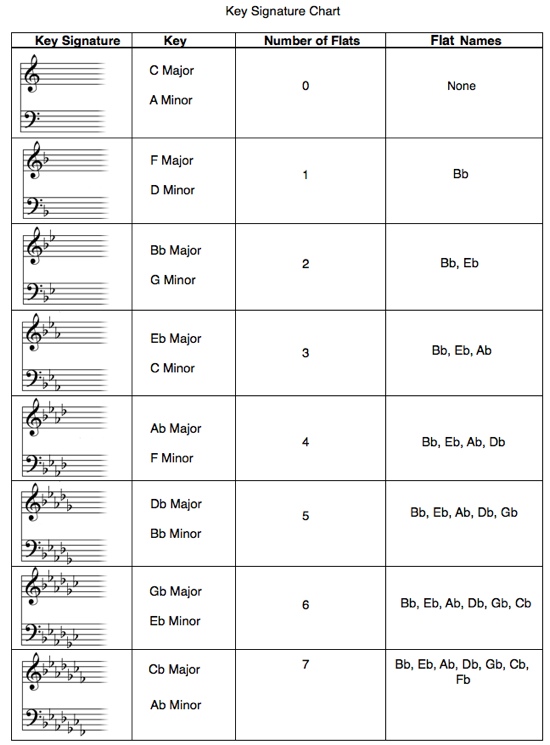
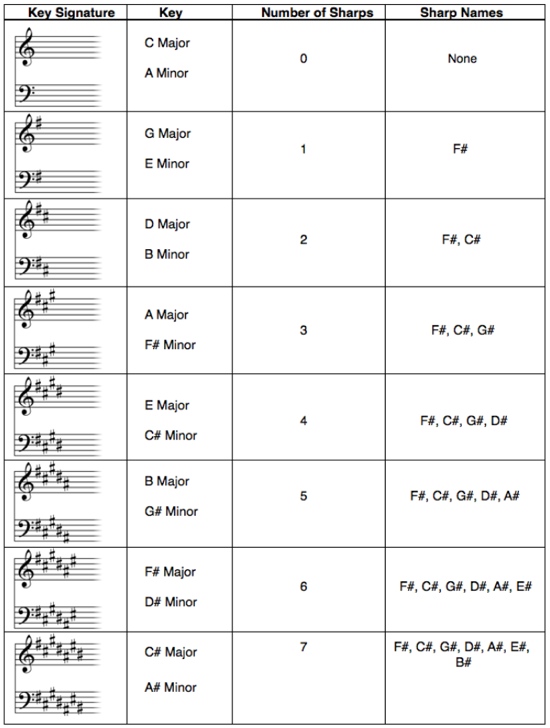
How To Use The Key Signature Chart
No matter what instrument you play you need to learn key signatures.
It is important that you know every note in all the keys. If you can easily recall the notes in each key you will be able to play more effectively and efficiently.
This chart can be used as a tool to help you quickly memorize the each key signature. If you take the time to study this chart, each of the keys will naturally be engraved into your memory.
Try and memorize each of the columns for the key you are wanting to learn. Each column contains helpful information that will make learning the key much easier.
Take a minute to review each element of the key signature chart so you are 100% sure you know exaclty what the chart is showing.
Elements of the Key Signature Chart
There are only four elements to this chart. If you don’t fully understand each of them then you will won’t get all of the benefits out of the chart as possible.
I’m going to go through each part of the chart and explain how it works so that you can really get the most benefit from it.
So here we go.
Element 1 – Key Signature
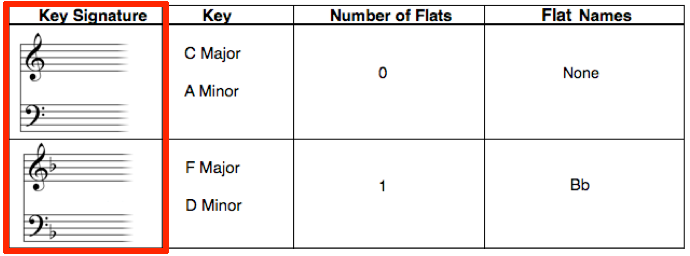
The first column of the chart displays an image of the key signature as it appears on sheet music. This shows both the treble and bass clef, and where each of the sharp symbols and flat symbols falls on the clef for each key.
This is important for the musician because it gives you an image of each of the keys signatures to help you quickly recognize what key a song is in.
Look at the beginning of each piece of sheet music and you will see an image similar to what you see in this column. Match what you see on the sheet music with what you see in this column on the key signature chart to determine what key the music is written in.
Element 2 – Key

The Key column tells you the name of the major key and relative minor key that is represented in the previous column.
This column is helpful if you know what key you are playing in and need to quickly find other information about that key. You can quickly find the major key or relative minor key in this column, then find other important information for that key from the other columns.
Element 3 – Number of Flats/Sharps
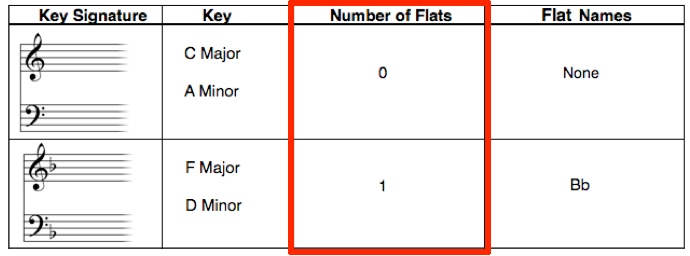
This is the most helpful column of the entire chart in my opinion.
Here you will find the number of sharps or flats in the key you are wanting to play in.
If you can correlate the number of sharps and flats with each key, it will make learning each key signature a lot easier. Using this column, and the previous column together, will makes memorizing each key much easier.
First try to memorize the number of sharps or flats in each of the keys. Then try and memorize which notes need to be sharp or flat. This makes memorizing key signatures much easier.
Element 4 – Flat/Sharp Names
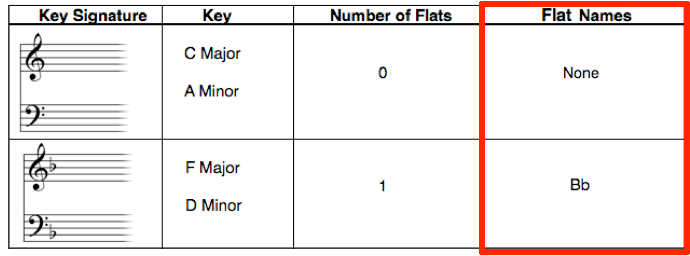
The Flat Names and Sharp Names column in the key signature chart tells you which notes in the key are supposed to be sharp or flat.
These are the notes that you need to adjust in the scale in order to create that scale. The number in the previous column will match the number of notes in this column.
For example; if the previous column says that there are 5 sharps, then this column will label which five notes need to be sharp.
Once you receive the chart, make sure you download a copy to your computer as well as print a copy for you to keep next to your piano.
This is one of the most helpful resources you can have for learning key signatures.
I hope that the key signature chart helps you learn music keys much more efficiently.
Go From Key Signature Chart Back to Piano Theory
Back to Home Page
